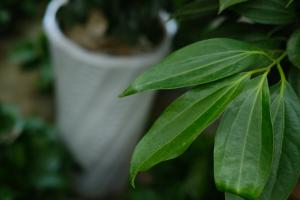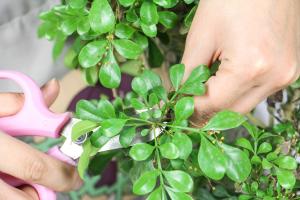How to Care for Your Indoor Bamboo Plant
Bamboo plants are popular among indoor gardeners due to their unique beauty and easy maintenance. They can add a touch of tranquility and elegance to any room, but they do require proper care in order to thrive. In this article, we will guide you on how to take care of your indoor bamboo plant.
Choosing a Suitable Place
The first step in taking care of your indoor bamboo plant is choosing a suitable place to keep it. Bamboo plants require bright, indirect sunlight, so it is best to place them near a window with filtered light. However, direct sunlight, especially during the summer months, can damage or burn the leaves of the plant. Additionally, bamboo plants prefer a humid environment, so placing a humidifier near the plant can help maintain the proper moisture level.
Watering Your Bamboo Plant
Watering is an essential aspect of bamboo plant care. Over or under-watering can cause damage to the plant. Indoor bamboo plants require enough water but not too much. Typically, it is best to water the plant once a week, allowing the soil to dry out between waterings. A good way to determine if your plant needs water is to stick your finger into the soil. If the top 1-2 inches of soil feel dry, it's time to water.
Fertilizing Your Bamboo Plant
Bamboo plants require regular feeding to ensure healthy growth. You can use a balanced liquid fertilizer, which contains equal amounts of nitrogen, phosphorus, and potassium. However, it is important to avoid over-fertilization as it can cause damage to the roots. Fertilizing once per month during the growing season, which typically runs from spring through summer, is sufficient. Reduce fertilization during the winter months when the plant is dormant.
Pruning Your Bamboo Plant
Pruning is an important part of caring for your indoor bamboo plant. Regular pruning helps to maintain a healthy and attractive plant. You should remove any yellow or dying leaves as soon as possible, as they can be a sign of disease or pest problems. Additionally, pruning helps to control the height and shape of the plant, preventing it from becoming too leggy or top-heavy.
Preventing Pest Problems
Indoor bamboo plants are generally resistant to pests, but they can still be affected by common houseplant bugs such as spider mites and mealybugs. You can prevent pest infestations by keeping the environment clean, avoiding over-watering, and ensuring proper ventilation. If you notice signs of pests, such as webbing or white spots on the leaves, you can use a gentle soap and water solution to remove them. In severe cases, a pesticide may be necessary.
In conclusion, indoor bamboo plants can bring beauty to your home or office, but they require proper care in order to thrive. By following these simple tips on watering, fertilizing, pruning, and pest prevention, you can keep your bamboo plant healthy and happy. Remember to always choose a suitable location with filtered sunlight and a humid environment, and avoid over-watering or over-fertilizing. With proper care, your indoor bamboo plant can be a stunning and unique addition to your indoor garden.

 how many times do yo...
how many times do yo... how many planted tre...
how many planted tre... how many pine trees ...
how many pine trees ... how many pecan trees...
how many pecan trees... how many plants comp...
how many plants comp... how many plants can ...
how many plants can ... how many plants and ...
how many plants and ... how many pepper plan...
how many pepper plan...






























